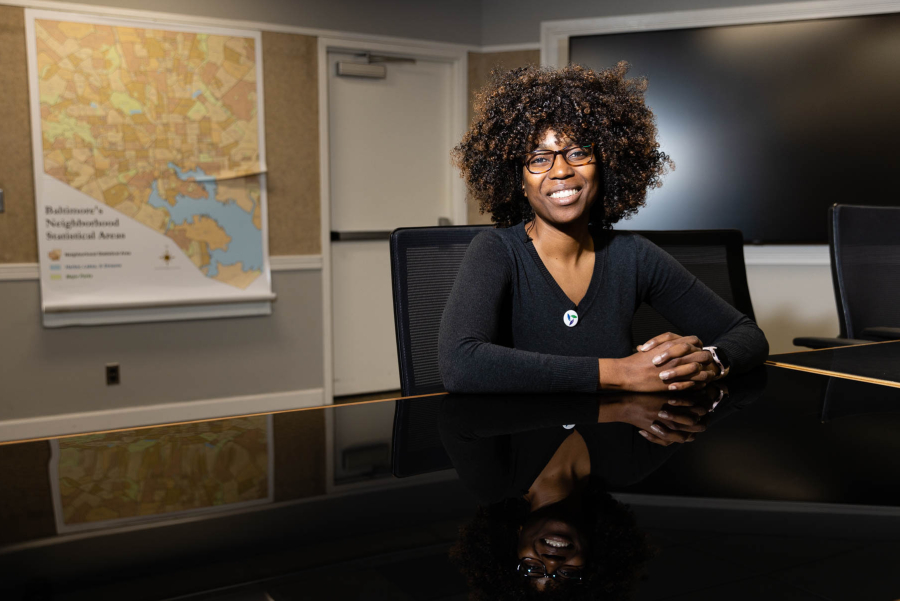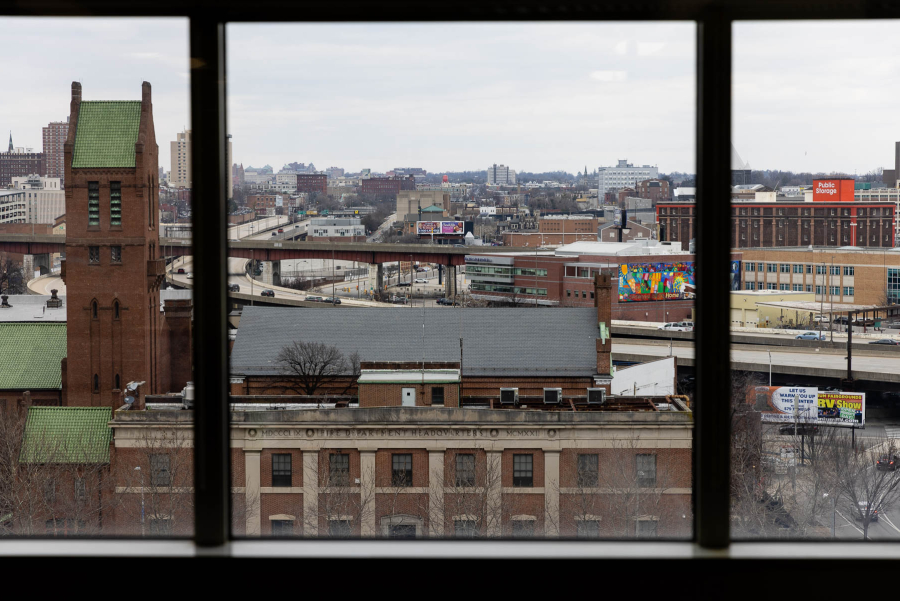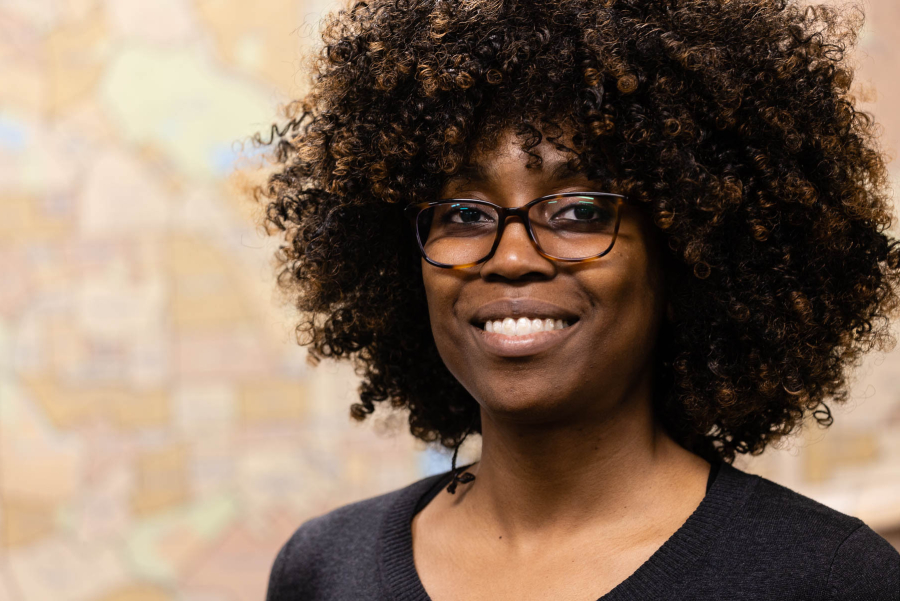A Baltimore-based climate activist puts people at the center of sustainability
Ava Richardson advances environmental sustainability efforts in Baltimore City

For Ava Richardson, sustainability is as much a public health issue as it is an environmental one. In Baltimore especially, where Richardson serves as the director of sustainability within the Department of Planning, poor air and water quality, a lack of available green space and a prevalence of landfills and industrial sites worsen the health of residents who already struggle from above-average rates of cardiovascular disease and respiratory illness. Her team at the Office of Sustainability is leading a number of efforts designed to limit the city’s environmental impact—from reducing food waste to advocating for more trees and green infrastructure —that’ll ultimately benefit the city’s most underserved communities.
How did you get involved in environmental sustainability?
I started my career in public health, actually. I studied biology in undergrad and then went on to pursue a Master of Public Health at Morgan State University. During that experience, I noticed how a lot of the challenges, especially when it came to chronic disease conditions, were all aligning with environmental issues and challenges. The more I worked in the public health field after finishing school, I realized the need to focus more explicitly on those environmental approaches, both from a policy and programming perspective. In 2018, I came to the Office of Sustainability to work on an initiative as a contractor that focused on food waste for the city. I did that for about two years and fell in love with the office and the work. And again, given that I have a public health background entering the sustainability field, there was somewhat of a learning curve, but there were so many applicable skills and expertise that I had learned that provided a really different lens to some of these issues.
What are you most proud of?
I would say more than anything, I’m proud to be a part of a team of amazing folks who are dedicated, smart, diligent and really supportive of the work. I feel like there has been so much work by my predecessors as well as our team members to lay the groundwork. It is mostly women who have led this work since the office was created over 10 years ago. I’m also proud of our food waste reduction. I had the opportunity to launch a food collection program at the farmers market in downtown Baltimore, which then expanded to the Waverly farmers market and now has expanded to resident drop off locations across the city. I think there's a lot of progress to be made in that area, but I am glad that those efforts are still going on and that we've seen a tremendous increase in the number of people interested and participating.

What are your greatest challenges?
The reality that climate-related risks will impact our most vulnerable communities is a major concern for our entire team. Ensuring our work is anchored to environmental justice, not just environmentalism, is critical to ensuring our most climate-vulnerable communities are made more resilient by our work. I'm learning more impactful ways to communicate and frame climate issues to stakeholders, including community leaders, decision makers and the general public. When it comes to community engagement, we need to better frame the issues to be more transparent about the tradeoffs that all environmental decisions require.
For example, how something like a bike lane is communicated only in the sense of its benefits, may ignore the fact that some people do not conceptualize those benefits in the same way. Creating space for more textured conversations about these issues, being really thoughtful about how we're including all perspectives in those decisions or designs and avoiding pejoratives when gathering this input is essential to bringing proactive climate interventions to Baltimore City. Ultimately, the goal is to improve the quality of life for our most important stakeholders, the more than 500,000 residents in the city.
Also just ensuring that there are more opportunities and better pipelines to enhance inclusion in the sustainability work so that we see more young people, young Black people, young Latinos, young people of color entering the field and staying in the field. These are our intended benefactors and they need to be at the table and involved in this work, especially at the leadership levels.
How do these sustainability efforts benefit people who live in Baltimore?
Our office has a practice of piloting projects and then helping to institutionalize those practices within different entities. One example of that is Made in Baltimore (MIB), a program that supports and promotes local businesses in the city. Buying locally made products reduces the environmental impact of these goods while bolstering the city’s economy. In 2020, MIB supported 1,450 jobs and members generated $32 million in revenue. MIB was conceptualized by Andy Cook while in the Office of Sustainability, and currently sits within the Baltimore Development Corporation.
Also, the food waste work which started in our office with support from the Natural Resources Defense Council is now being institutionalized within the Department of Public Works, who will expand food scrap collection locations to a total of 10 across the city. We also have our Community Resiliency Hub Program, which has been a used as a model for cities across the nation and is led by our Climate and Resilience Planner, Aubrey Germ. These hubs serve as critical connection points during and after disaster events and can be activated on extreme heat days as cooling centers or to deploy water and other resources. The Hubs program is and will remain under our office, but it is another example of direct benefits we provide to residents.

What inspires you?
Most of all, it is the past successes of environmental justice advocates, activists and communities who are key partners in this work, plus the countless frontline communities, often BIPOC communities (Black, Indigenous and People of Color), demanding change. I also try to stay up to date on the latest developments and innovations that are rising out of cities nationally and across the globe, particularly in the Global South. Just being able to learn from some of the solutions coming from other areas is really critical and important because it provides a vision for an alternative future—one that does not result in a climate catastrophe. When I speak to a lot of our youth across the city who are incredibly knowledgeable, motivated and energized to make progress on climate issues, it gives me a lot of hope to know that we will have a cadre of environmental advocates, professionals, researchers, etc. to steward this work.
Reading books, the latest research and articles about climate change and trying to develop a sense of climate optimism is critical. It's so easy to look at the likelihood of reaching 1.5 °C, compared to preindustrial levels and lose hope. But we have the possibility of reaching a point where climate action is such a normal aspect of our lives, it is the issue that all governments, institutions, communities and individuals are focused on, pouring resources and time into. This vision for a more resilient, sustainable and equitable Baltimore is indeed inspirational.
Can you describe your connection with Baltimore City?
My mom actually grew up here in Baltimore City. My grandparents and my aunts and uncles were part of the Great Migration coming from Greenville, North Carolina, so my mom was the only one of her siblings born here in the city, before moving to Washington, D.C. I’m a lifetime Marylander and grew up in Prince George’s County, and then came out here to study public health at Morgan State University. And I really fell in love with the city. It’s such a community-based place and I just felt connected to those who live here.

Comments
There are no comments.
Thank you!
Your comment has been received. Before it can be published, the comment will be reviewed by our team to ensure it adheres with our rules of engagement.
Back to recent stories